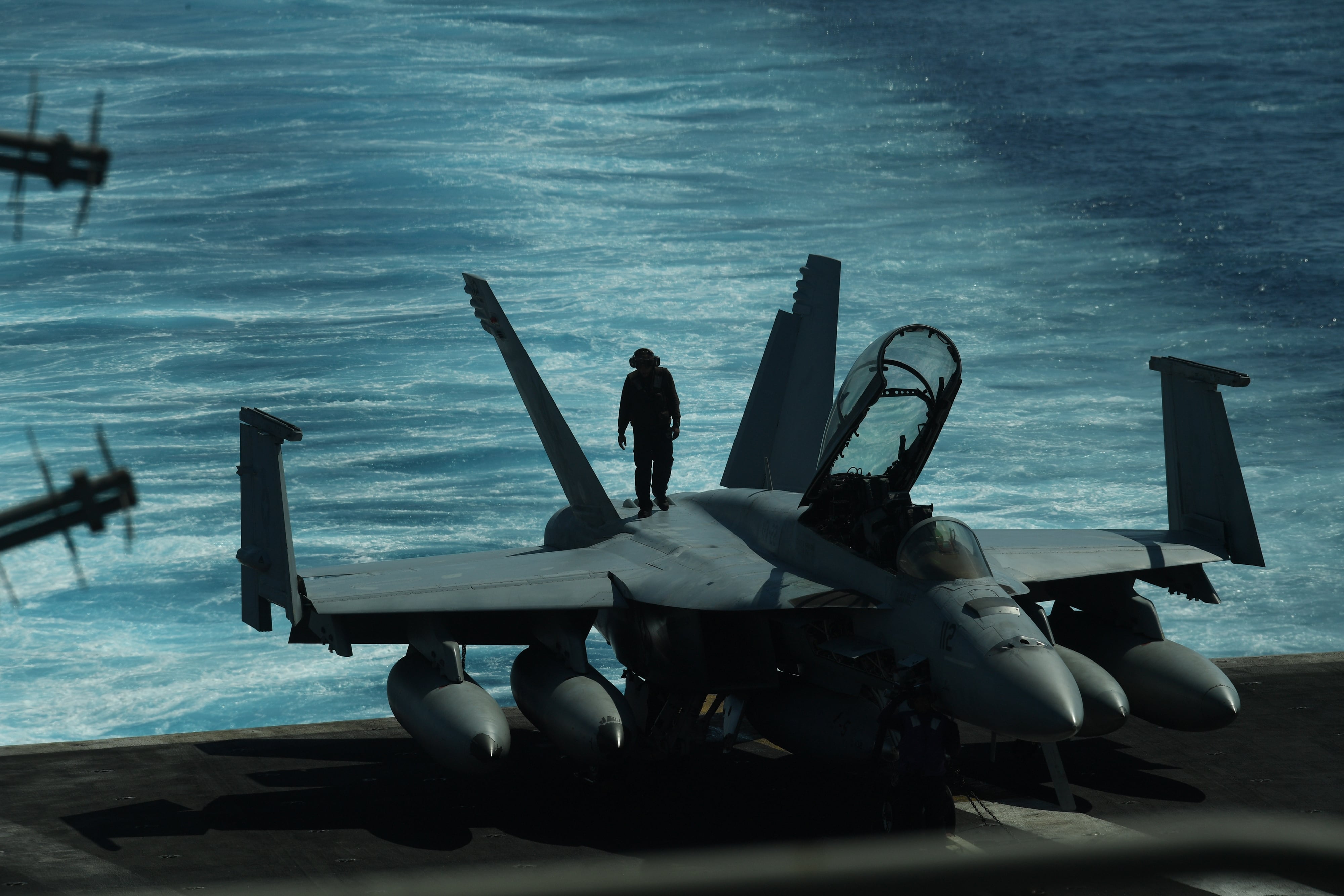Many of the United States’ foremost sea power experts met on Friday to consider the role of aircraft carriers as guarantors of national security. It was my privilege to participate in the Lexington Institute’s inaugural Carrier Strike Group Forum held in Pentagon City, Virginia.
I’m not a Pentagon guy or a Navy Yard guy. My job is on the waterfront, ensuring that our aircraft carriers, aircraft, and the men and women who operate them have the tools, training and supplies they need to sail in support of national defense and maritime security.
My staff and I recognize every day the value of aircraft carriers and of the supporting ships, aircraft squadrons and staffs that constitute America’s unique and globally respected carrier strike groups.
RELATED

I came away from today’s well-informed and energetic discussion with confidence that aircraft carriers will continue to generate the offensive and defensive strength around which our Navy is organized to fight.
Some say that carriers are too expensive. A fair assessment considers benefits as well as cost.
No other weapons system or combination of lesser systems in existence or on the drawing board is as lethal, agile and resilient as a full-sized nuclear-powered aircraft carrier and its air wing. Carriers deploy with the responsiveness, endurance, multidimensional might, inherent battlespace awareness, and command-and-control capabilities that America needs to prevail in great power competition.
Fleet and combatant commanders are unequivocal and unrelenting in their requests for carrier strike group deployments. I experienced this firsthand in 2015 when I commanded the USS Theodore Roosevelt’s Carrier Strike Group, and I recognize it today with USS Abraham Lincoln’s strike group’s deployment to U.S. Central Command. America needs and uses its aircraft carriers.
A carrier strike group, by its mere presence, can shape events in the nation’s favor. When deterrence gives way to war, a naval force enabled by an aircraft carrier and its air wing comes to the fight trained and equipped across a full range of missions, ready to control the sea, conduct strikes from the sea, and maneuver across the electromagnetic spectrum and in cyberspace. No other naval force fields a commensurate range and depth of combat capabilities.
Carriers remain relevant and potent year after year and decade after decade because they are adaptable platforms in which flexible payloads deploy. Carrier air wings evolve, incorporating improved and revolutionary aircraft like the unmanned MQ-25 Stingray that first flew last week. The weapons carried by those aircraft evolve even faster, keeping carrier strike groups dominant over realized and potential threats.
The nation’s considerable investment in a carrier pays off for at least half a century, twice the proven service life of other major classes of warships. The first nuclear-powered aircraft carrier, USS Enterprise, served the nation for 51 years. The 10 ships of the Nimitz class are on track to meet or exceed their planned 50-year service lives, the still-active lead ship of the class having been commissioned over 44 years ago.

The ships of the new Gerald R. Ford class represent cutting-edge aircraft carrier design. As is the case in the introduction of any major technological innovation, there are cost, schedule and performance challenges to overcome. The Navy and the shipbuilder are overcoming these challenges, and the fleet will enjoy operational successes when the lead ship of this class joins the deployment rotation.
Some have noted that our adversaries have improved their anti-ship weapons. This is nothing new, nor does it mean that our carriers are defenseless.
In World War II, America’s carriers faced a threat from torpedoes and dive bombers. During the Cold War, adversaries fielded air-launched, supersonic, nuclear-tipped missiles. Today’s missiles employ hypersonic speeds and ballistic trajectories.
Through it all, the U.S. Navy has developed and will continue to develop superior weapons and tactics to stay ahead of the threats. Carriers are mobile, defendable and durable.
In a time of war, aircraft carriers will be the most survivable airfields — perhaps the only survivable airfields — in the maritime area of operations.
I am proud to be a carrier aviator and a carrier sailor. I am also a critical thinker and have examined from many perspectives the Navy that our nation needs. That Navy needs aircraft carriers and their strike groups.
When our country has faced maritime crises, presidents have famously asked: “Where are the carriers?” I am confident that presidents for decades to come will continue to ask that question, and that the answer must remain: “Manned, trained, equipped and ready.”
U.S. Navy Rear Adm. Roy “Trigger” Kelley commands Naval Air Force Atlantic. From his headquarters in Norfolk, Virginia, he oversees the manning, training and equipping of East Coast aircraft carriers and their assigned aircraft.








